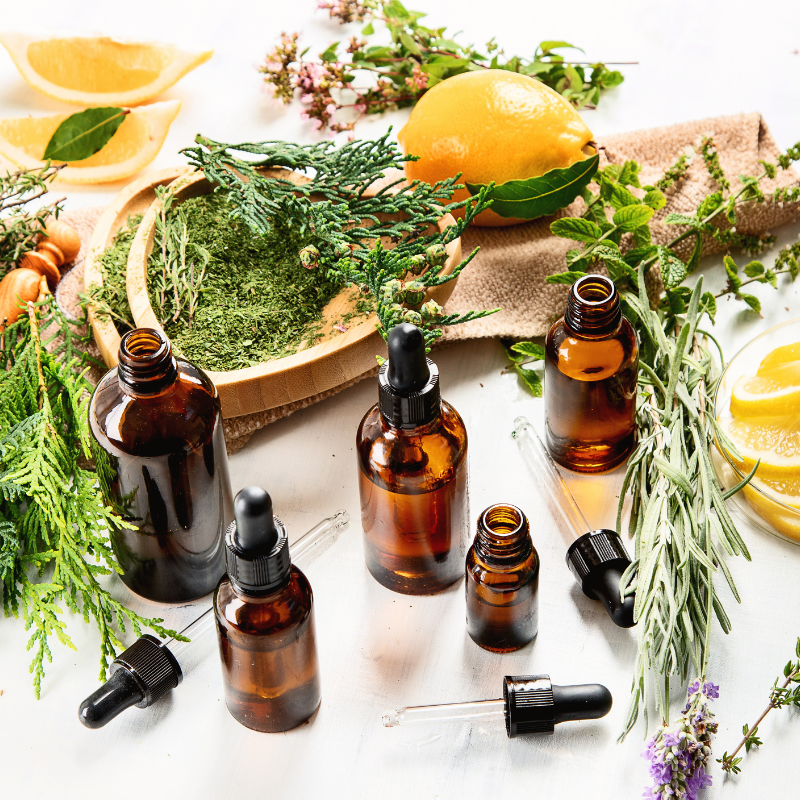
What is Essential Oil?
1. Definition
According to the International Organization for Standardization (ISO 9235:2013), an essential oil is defined as:
“A product obtained from a natural raw material of plant origin, by steam distillation, mechanical processes, or dry distillation.”
This means essential oils are concentrated plant extracts that capture the volatile compounds responsible for the characteristic aroma and potential therapeutic properties of plants.
2. How Essential Oils Are Made
Essential oils are typically extracted using methods such as:
Steam Distillation – the most common method, using steam to release aromatic compounds.
Cold Pressing – mainly used for citrus oils (e.g., orange, lemon).
Solvent Extraction/CO₂ Extraction – used for delicate flowers like jasmine.
These methods ensure that the natural essence of the plant is preserved in a concentrated form.
3. Scientific Evidence and Research
a) Antimicrobial Effects
Numerous studies confirm that essential oils have natural antimicrobial properties. For instance, tea tree oil demonstrates strong antibacterial and antifungal activity, even against antibiotic-resistant strains (Carson, Hammer, & Riley, 2006).
b) Psychological and Neurological Effects
A systematic review and meta-analysis by Donelli et al. (2019) found that lavender aromatherapy (primarily via inhalation) had a significant positive effect in reducing anxiety across multiple studies. A large double-blind RCT showed that oral lavender oil preparation (Silexan) was superior to placebo and achieved HAMA reductions at least as large as paroxetine 20 mg over 10 weeks; however, the trial was not designed to test non-inferiority. (Kasper et al., 2014)
c) Pain and Inflammation
Peppermint oil, rich in menthol, has demonstrated effectiveness in tension-type headaches. A randomized, double-blind study showed that topical application of peppermint oil was as effective as 1000 mg of paracetamol (acetaminophen) in relieving headache intensity (Göbel, Schmidt, & Soyka, 1996).
4. Conclusion
Essential oils are not just aromatic plant extracts; they are scientifically studied for their antimicrobial, psychological, and pain-relieving properties. While more research is still ongoing, the existing evidence highlights their potential role in complementary wellness and holistic health.
References
Carson, C. F., Hammer, K. A., & Riley, T. V. (2006). Melaleuca alternifolia (Tea Tree) Oil: A Review of Antimicrobial and Other Medicinal Properties. Clinical Microbiology Reviews, 19(1), 50–62. https://doi.org/10.1128/CMR.19.1.50-62.2006
Donelli, D., Antonelli, M., Bellinvia, S., Gensini, G. F., Borghi, L., & Fiorentini, C. (2019). Lavender (Lavandula angustifolia Mill.) essential oils for anxiety: A systematic review and meta-analysis of randomized clinical trials. Phytomedicine, 65, 153099. https://doi.org/10.1016/j.phymed.2019.153099
Kasper, S., Gastpar, M., Müller, W. E., Volz, H. P., Möller, H. J., Schläfke, S., & Dienel, A. (2014). Silexan, an orally administered Lavandula oil preparation, is effective in generalized anxiety disorder – a randomized, double-blind, placebo controlled trial. International Journal of Neuropsychopharmacology, 17(6), 859–869. https://doi.org/10.1017/S1461145714000017
Göbel, H., Schmidt, G., & Soyka, D. (1996). Effect of peppermint and eucalyptus oil preparations on neurophysiological and experimental algesimetric headache parameters. Cephalalgia, 16(2), 117–118. https://doi.org/10.1046/j.1468-2982.1996.1602117.x



